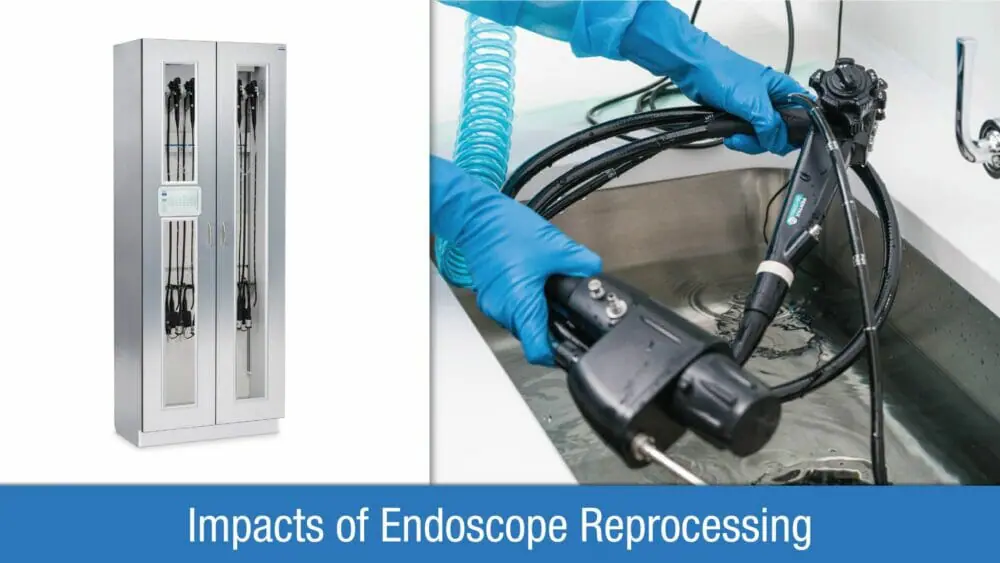
Who Develops Endoscope Reprocessing Standards?
Endoscope reprocessing guidelines continue to change as the industry works to reduce the number of infectious outbreaks attributed to inadequate endoscope reprocessing.
Multiple stakeholders have developed GI scope reprocessing guidelines, including:
- Healthcare Infection Control Practices Advisory Committee (HICPAC),
- American Society for Gastrointestinal Endoscopy (ASGE),
- Society of Gastroenterology Nurses and Associates (SGNA),
- Association for Professionals in Infection Control and Epidemiology (APIC),
- European Society of Gastrointestinal Endoscopy (ESGE),
- Association for the Advancement of Medical Instrumentation (AAMI), and
- Association of Perioperative Registered Nurses (AORN).
The guidelines for GI scope reprocessing vary between organizations. However, most all agree on the basics, such as staff training, high-level disinfection (HLD), air drying, and following the manufacturer’s instructions for storing endoscopes.
Whose Guidelines Should We Follow?
The ASGE Quality Assurance in Endoscopy Committee recommends that endoscopy units review the guidelines of the different organizations and work with regulators to ensure that the appropriate ones for each facility are applied.
This article will focus on the 2018 SGNA scope reprocessing guidelines.
The SGNA recognizes that HLD processes are not perfect and that the industry continues to review and reassess endoscope reprocessing protocols and endoscope design. However, SGNA shares that rigorous adherence to HLD protocols by trained staff under the strict environmental conditions with continuous quality control checks can minimize the spread of endoscope-related infections.
How Adherence to SGNA Scope Cleaning Guidelines Impacts Safety of Patients and Staff
A device with small lumens used to investigate the gastrointestinal tract attracts body fluids and tissue to its many nooks and crannies. Endoscope reprocessing is a primarily hands-on multi-step procedure, potentially exposing the reprocessing staff to infectious organisms or chemical cleaners during every phase of the cleaning process.
Therefore, reprocessing protocols should call for appropriate PPE during all phases of endoscopy scope cleaning and strict adherence to cleaning steps to protect the reprocessing staff.
This same device has the potential to also harm patients if the reprocessing protocol is not strictly followed. Let’s review the endoscope reprocessing steps, as outlined by SGNA, and discuss how each step helps prevent the spread of infection.
Pre-cleaning is a pre-rinse and wipe step performed in the procedure room that washes off much of the body fluids and tissue clinging to the scope, inside and out. This step helps prevent biofilm from developing during the early part of the cleaning process. Biofilm is the proliferation of bacteria into a sticky substance that is difficult to remove.
Leak testing ensures that damaged scopes are identified and removed from use. If scratches, nicks, or holes go undetected, these areas are harder to clean and can harbor microorganisms, potentially exposing the next patient to infectious pathogens.
Manual cleaning must be performed immediately after leak testing to ensure that biofilm does not have time to develop. Manual cleaning involves washing, brushing, and flushing all surfaces of the endoscope in a detergent solution following the manufacturer’s IFU. Inadequate manual cleaning can result in retained microorganisms.
Rinsing before visual inspection further reduces the number of organisms on the scope and minimizes the risk that visual inspection will miss an area of concern due to the presence of detergent.
Visual inspection uses magnification and possibly cameras under good lighting to identify organic matter or damaged areas, both of which can result in retained pathogens that can expose the next patient to infection.
The above steps are necessary before the scope undergoes HLD. SGNA cites studies that show that HLD is not enough to prevent the spread of infections and that rigorous cleaning before HLD is imperative to reduce the risk of retained pathogens.
High-level disinfection, manually or with an AER, is the industry standard for GI scope reprocessing. Using an incompatible detergent, temperature, or timing can potentially damage the scope parts or result in ineffective reprocessing.
A second rinse after HLD removes all detergents and alcohol, protecting patients from chemical exposure.
Drying the scope is crucial to preventing infection. Retained moisture may allow any remaining bacteria to proliferate and potentially develop into biofilm, exposing patients to infectious organisms.
Once drying is complete, endoscopy storage guidelines require that the scope be stored in a clean, dry environment.
While there are no endoscopy storage cabinet guidelines, a drying cabinet that maintains clean or HEPA-filtered air under pressure throughout the cabinet as well as through the endoscope channels is preferred by some organizations.
SGNA recommends that scopes be stored for up to 7 days after processing according to the IFU and industry guidelines. SGNA also recommends that facilities develop a method to track endoscopes so infectious outbreaks can be traced back to patients, procedures, and reprocessing technicians.

Cindy Blye
Content WriterCindy Blye, BSN, RN, CCM is a Registered Nurse and Certified Case Manager. She is an Alumni of West Virginia University School of Nursing (BSN), and a member of the Association of Health Care Journalists and The Authors Guild.
